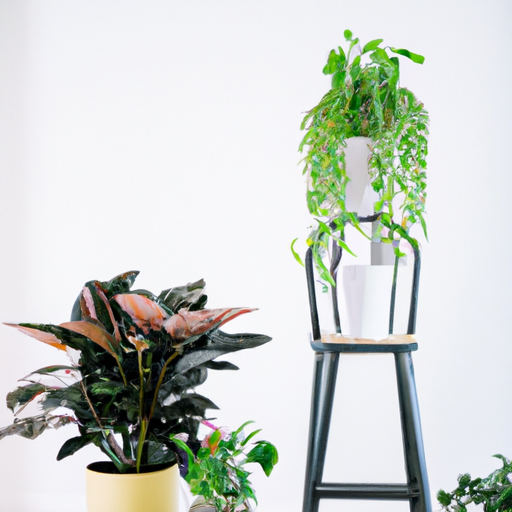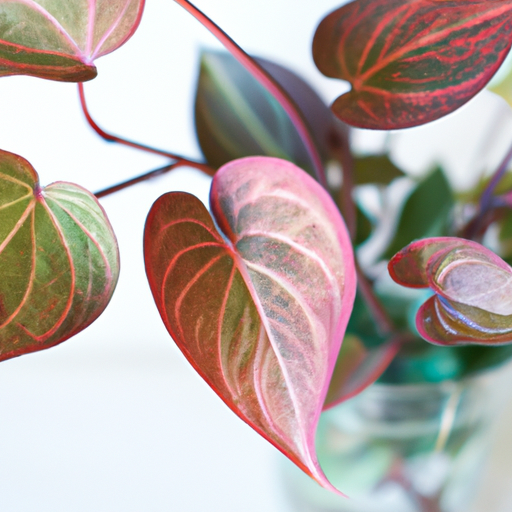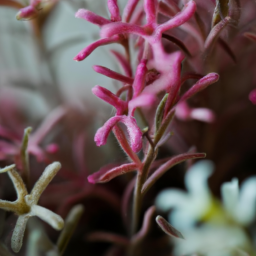
Have you ever walked through a garden and been captivated by the vibrant colors and diverse textures of the plants? It’s truly a sight to behold. The art of mixing plant colors and textures is a skill that can transform any garden into a masterpiece. Whether you’re a seasoned gardener or just starting out, understanding how to combine different plant colors and textures can take your gardening game to the next level. In this blog post, we’ll explore the secrets behind creating stunning plant combinations that will make your garden the envy of the neighborhood. So, grab your gardening gloves and let’s dive into the art of mixing plant colors and textures.
The Art of Mixing Plant Colors and Textures
Choosing the Right Plant Combinations for Colorful and Textured Gardens
Creating a vibrant and visually appealing garden involves more than just randomly planting different flowers and shrubs. The art of mixing plant colors and textures requires careful consideration and planning. By selecting the right plant combinations, you can create a stunning garden that is a feast for the eyes. In this guide, we will explore the steps to achieve a harmonious blend of colors and textures in your garden.
Understanding Color Theory
Before diving into the world of plant combinations, it’s important to have a basic understanding of color theory. Colors can evoke different emotions and create specific moods. The color wheel is a useful tool to help you visualize and select complementary, analogous, or contrasting color schemes for your garden.
Complementary colors are located opposite each other on the color wheel. These combinations create a high contrast and can make your garden visually striking. For example, pairing purple flowers with yellow ones can create an eye-catching display. Analogous colors, on the other hand, are located next to each other on the color wheel. These combinations create a harmonious and soothing effect. For instance, blending various shades of blue and purple can create a calming atmosphere in your garden.
Contrasting colors, such as red and green or orange and blue, create a vibrant and energetic feel. These combinations can add excitement and drama to your garden. By understanding color theory, you can make informed decisions when selecting plants for your garden.
Choosing Plants with Complementary Colors
One way to create a visually appealing garden is by selecting plants with complementary colors. Complementary colors, as mentioned earlier, are located opposite each other on the color wheel. When paired together, they create a striking contrast that can make your garden stand out.
For example, consider planting orange marigolds alongside blue salvia. The vibrant orange and deep blue will create a captivating visual display. Similarly, pairing yellow coreopsis with purple coneflowers can create a stunning combination.
When selecting plants with complementary colors, it’s important to consider their blooming periods. Ensure that the plants you choose bloom at the same time or have overlapping bloom periods to create a cohesive and continuous display of color.
Blending Plants with Analogous Colors
If you prefer a more harmonious and soothing garden, consider blending plants with analogous colors. Analogous colors, as mentioned earlier, are located next to each other on the color wheel. When combined, they create a sense of unity and tranquility.
For instance, combining various shades of pink and purple flowers can create a serene and calming atmosphere in your garden. You can mix different varieties of roses, lavender, and asters to achieve this effect. Blending different shades of blue and green can also create a peaceful and refreshing ambiance.
When using analogous colors, it’s important to consider the intensity and saturation of the colors. Mixing different shades and tints of the same color can add depth and dimension to your garden.
Adding Contrast with Textures
Colors alone can create a visually appealing garden, but adding textures takes it to the next level. Textures add depth and interest to your garden, making it more dynamic and engaging.
Consider incorporating plants with different leaf shapes, sizes, and textures. For example, pairing plants with broad, smooth leaves alongside plants with delicate, feathery foliage creates an interesting contrast. Combining spiky plants with soft, rounded ones can also add visual interest.
Additionally, consider the texture of the plant’s flowers. Some flowers have smooth, velvety petals, while others have frilly or spiky blooms. By combining plants with contrasting textures, you can create a garden that is visually captivating and tactilely intriguing.
Maintaining Balance and Harmony
While experimenting with different plant combinations, it’s important to maintain balance and harmony in your garden. Avoid overcrowding or overwhelming the space with too many colors or textures. Instead, aim for a cohesive and well-balanced composition.
Consider the overall size and shape of the plants you choose. Tall plants can provide a vertical element, while low-growing plants can create a carpet-like effect. Mixing plants with different heights and forms can add visual interest and create a sense of movement in your garden.
Furthermore, pay attention to the cultural requirements of the plants. Ensure that they have similar sunlight, water, and soil preferences to thrive together. Proper maintenance and care will help your garden flourish and maintain its beauty throughout the seasons.
In conclusion, the art of mixing plant colors and textures involves understanding color theory, selecting plants with complementary or analogous colors, adding contrast with textures, and maintaining balance and harmony in your garden. By following these steps and experimenting with different combinations, you can create a visually stunning and captivating garden that will be the envy of your neighbors.
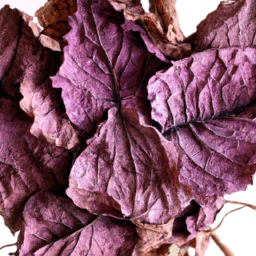
Creating a Harmonious Blend of Colors and Textures in Your Plantings
When it comes to creating a visually stunning garden or landscape, the art of mixing plant colors and textures is essential. By carefully selecting and combining different plants, you can create a harmonious blend that not only pleases the eye but also adds depth and interest to your outdoor space. In this guide, we will explore the steps to achieve a perfect mix of colors and textures in your plantings.
Choosing a Color Palette
The first step in creating a harmonious blend of colors and textures is to choose a color palette. Consider the overall theme or mood you want to convey in your garden. Are you aiming for a vibrant and energetic space, or do you prefer a more serene and peaceful atmosphere? Once you have a clear vision, select a color scheme that aligns with your desired ambiance.
One popular approach is to use a complementary color scheme, where colors that are opposite each other on the color wheel are paired together. For example, purple and yellow, or red and green. This creates a striking contrast that instantly catches the eye. Another option is an analogous color scheme, where colors that are next to each other on the color wheel are combined. This creates a more harmonious and soothing effect.
When choosing your color palette, consider the colors of your existing landscape elements, such as fences, walls, or hardscape features. You want your plantings to complement and enhance the overall design, rather than clash with it.
Playing with Textures
Textures play a crucial role in creating visual interest in your plantings. By mixing plants with different leaf shapes, sizes, and textures, you can add depth and dimension to your garden. When selecting plants, consider their foliage as much as their flowers. Look for plants with smooth, shiny leaves, as well as those with rough, textured leaves. Combine plants with fine, delicate foliage with those that have bold, coarse leaves.
Grasses are excellent for adding texture to your plantings. Their wispy, feathery appearance contrasts beautifully with the broader leaves of other plants. Consider incorporating ornamental grasses such as fountain grass or maiden grass for added visual interest.
Additionally, don’t forget about the textures of flowers themselves. Some flowers have smooth, velvety petals, while others have intricate patterns or ruffled edges. By combining different flower textures, you can create a truly captivating display.
Creating Balance and Contrast
Once you have chosen your color palette and selected plants with various textures, it’s essential to create balance and contrast in your plantings. Balance refers to the distribution of visual weight in your garden. You can achieve balance by placing plants of similar visual weight on either side of a focal point or by evenly distributing plants throughout the space.
Contrast, on the other hand, adds excitement and visual impact. You can create contrast by pairing plants with different colors, textures, or heights. For example, place a tall, spiky plant next to a low, mounding one, or combine plants with smooth leaves with those that have deeply lobed foliage.
Remember to consider the overall size and growth habit of the plants you choose. Ensure that they will not overshadow or overwhelm each other as they mature. Pay attention to their eventual heights and spreads, and leave enough space for each plant to thrive.
In conclusion, the art of mixing plant colors and textures is all about creating a harmonious blend that pleases the eye and adds depth to your outdoor space. By carefully selecting a color palette, playing with textures, and creating balance and contrast, you can achieve a visually stunning garden or landscape that showcases your unique style and creativity.
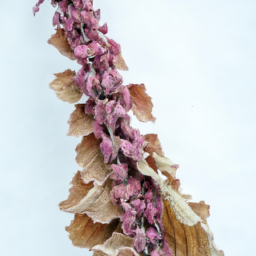
Techniques for Mixing Plant Colors and Textures to Enhance Your Landscape Design
Welcome to the world of plant design! Mixing plant colors and textures is an art that can transform your landscape into a visually stunning masterpiece. Whether you are a seasoned gardener or just starting out, this guide will provide you with step-by-step techniques to create a harmonious blend of colors and textures in your garden. So, let’s dive in and explore the art of mixing plant colors and textures!
Understanding Color Theory
Before we delve into the techniques of mixing plant colors and textures, it’s important to have a basic understanding of color theory. Colors can evoke different emotions and create different moods in a garden. The color wheel is a helpful tool that can guide you in choosing the right color combinations for your landscape.
Complementary colors, located opposite each other on the color wheel, create a vibrant and eye-catching contrast. For example, pairing purple flowers with yellow foliage can create a striking visual impact. Analogous colors, which are adjacent to each other on the color wheel, create a harmonious and soothing effect. For instance, combining various shades of blue and purple can create a serene and calming atmosphere in your garden.
Now that we have a basic understanding of color theory, let’s explore some techniques for mixing plant colors and textures:
1. Create Contrast with Foliage
Foliage plays a crucial role in adding texture and visual interest to your garden. Mixing plants with different leaf shapes, sizes, and colors can create a stunning contrast. For example, pairing plants with broad, lush leaves with those that have delicate, feathery foliage can create a visually dynamic composition.
Consider using plants with variegated leaves, which have a mix of different colors on their foliage. This can add depth and dimension to your garden. For instance, combining plants with green and white variegated leaves can create a striking contrast against a backdrop of solid green foliage.
2. Layer Plants for Depth
Layering plants with different heights and textures can add depth and visual interest to your garden. Start by placing taller plants at the back of your garden beds or borders, and gradually transition to shorter plants towards the front. This creates a sense of depth and makes your garden appear larger.
Consider using plants with different textures, such as those with spiky leaves, soft grasses, or delicate flowers. This combination of textures can create a visually appealing and dynamic landscape. For example, pairing plants with spiky leaves, like yucca, with delicate flowers, like lavender, can create an interesting contrast.
3. Harmonize Colors with a Focal Point
Creating a focal point in your garden can help harmonize the colors and textures of your plants. Choose a plant or an object that stands out and draws attention. This focal point can be a vibrant flower, a unique sculpture, or even a beautifully designed garden structure.
Once you have chosen your focal point, select plants with colors and textures that complement it. For example, if your focal point is a red rose, consider surrounding it with plants that have green foliage and white flowers to create an elegant and balanced composition.
Remember, the art of mixing plant colors and textures is all about experimentation and creativity. Don’t be afraid to try new combinations and see what works best for your garden. With these techniques and a keen eye for design, you’ll be able to create a visually stunning landscape that will be the envy of your neighbors. Happy gardening!
In Summary
Mixing plant colors and textures is an art form that can transform any garden into a visually stunning masterpiece. Whether you’re a seasoned gardener or just starting out, understanding how to combine different plant colors and textures can elevate your outdoor space to a whole new level.
When it comes to mixing plant colors, the key is to create a harmonious balance. Consider using a color wheel as your guide. Colors that are opposite each other on the wheel, such as purple and yellow, create a striking contrast. On the other hand, colors that are adjacent to each other, like blue and purple, create a more soothing and calming effect. By strategically placing plants with contrasting or complementary colors, you can create a vibrant and dynamic garden that catches the eye.
In addition to colors, textures also play a crucial role in creating visual interest in your garden. Mixing different plant textures, such as smooth and glossy leaves with rough and spiky ones, adds depth and dimension to your outdoor space. Combining plants with varying leaf shapes and sizes can also create a visually pleasing effect. For example, pairing plants with large, broad leaves with those that have delicate, fern-like foliage creates a beautiful contrast. By experimenting with different plant textures, you can create a garden that is not only visually appealing but also tactilely interesting.
In conclusion, the art of mixing plant colors and textures is all about creating a harmonious balance and visual interest in your garden. By understanding the principles of color theory and experimenting with different plant textures, you can transform your outdoor space into a work of art. So go ahead, unleash your creativity, and let your garden flourish with a stunning mix of colors and textures.
Curious Minds Asked, We Responded. Frequently Asked Questions:
Q1: What is the art of mixing plant colors and textures?
A1: The art of mixing plant colors and textures involves combining different plants with varying colors and textures to create a visually appealing and harmonious garden or landscape. By carefully selecting plants that complement each other, you can create a stunning display that adds depth, interest, and beauty to your outdoor space.
Q2: How can I mix plant colors effectively?
A2: To mix plant colors effectively, consider using a color wheel as a guide. Colors that are opposite each other on the wheel, such as purple and yellow or red and green, create a striking contrast. On the other hand, colors that are adjacent to each other, such as blue and purple or orange and yellow, create a more harmonious and calming effect. Experiment with different color combinations to find what appeals to your personal taste.
Q3: What are some tips for mixing plant textures?
A3: Mixing plant textures involves combining plants with different leaf shapes, sizes, and textures. To create an interesting and balanced look, consider using a combination of fine-textured plants, such as ornamental grasses or ferns, with coarse-textured plants, such as succulents or broad-leaved plants. This contrast in textures adds visual interest and creates a dynamic and layered effect in your garden.
Q4: Can I mix plants with different water and sunlight requirements?
A4: While it’s generally best to group plants with similar water and sunlight requirements together for easier maintenance, it is possible to mix plants with different needs. However, it requires careful planning and consideration. Make sure to choose plants that have compatible needs and can thrive in the same conditions. Additionally, be prepared to provide extra care, such as watering or shading, to plants with different requirements to ensure their well-being.
Q5: How do I maintain a balanced composition when mixing plant colors and textures?
A5: Maintaining a balanced composition when mixing plant colors and textures is crucial for a visually pleasing result. Consider the overall size and shape of the plants, and how they will fill the space. Aim for a mix of tall, medium, and low-growing plants to create height variation. Distribute colors and textures evenly throughout the area, ensuring that no one plant dominates the scene. Regular pruning and maintenance will also help to keep the composition balanced and prevent overcrowding.
Emily Bloomfield is an interior designer and horticulturist specializing in incorporating indoor plants into interior spaces. With a background in both design and plant science, Emily offers a unique perspective on creating harmonious living environments through the synergy of greenery and aesthetics. Her creative ideas and innovative solutions make her a sought-after authority in the field.

